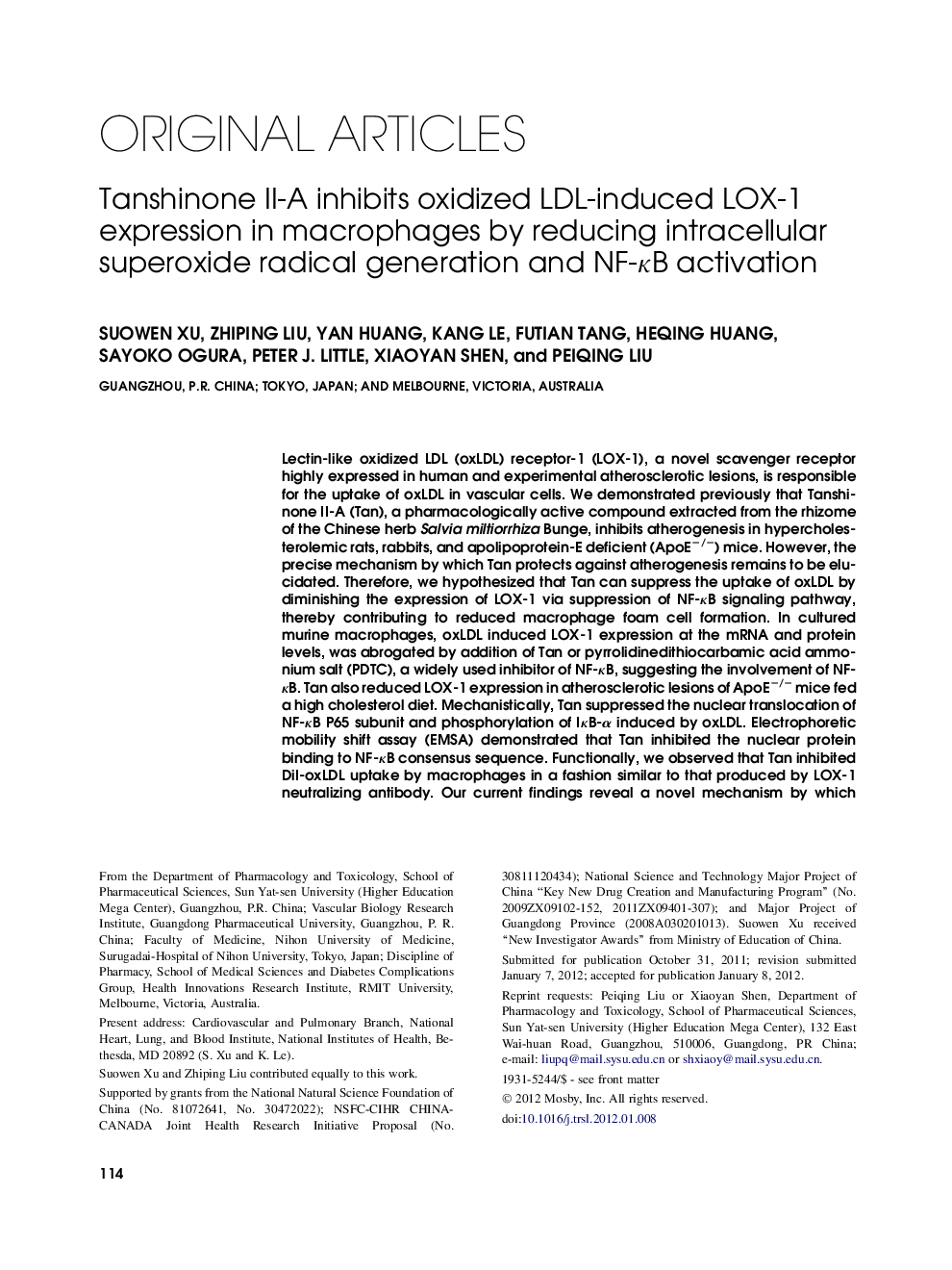| کد مقاله | کد نشریه | سال انتشار | مقاله انگلیسی | نسخه تمام متن |
|---|---|---|---|---|
| 3840686 | 1247930 | 2012 | 11 صفحه PDF | دانلود رایگان |

Lectin-like oxidized LDL (oxLDL) receptor-1 (LOX-1), a novel scavenger receptor highly expressed in human and experimental atherosclerotic lesions, is responsible for the uptake of oxLDL in vascular cells. We demonstrated previously that Tanshinone II-A (Tan), a pharmacologically active compound extracted from the rhizome of the Chinese herb Salvia miltiorrhiza Bunge, inhibits atherogenesis in hypercholesterolemic rats, rabbits, and apolipoprotein-E deficient (ApoE−/−) mice. However, the precise mechanism by which Tan protects against atherogenesis remains to be elucidated. Therefore, we hypothesized that Tan can suppress the uptake of oxLDL by diminishing the expression of LOX-1 via suppression of NF-κB signaling pathway, thereby contributing to reduced macrophage foam cell formation. In cultured murine macrophages, oxLDL induced LOX-1 expression at the mRNA and protein levels, was abrogated by addition of Tan or pyrrolidinedithiocarbamic acid ammonium salt (PDTC), a widely used inhibitor of NF-κB, suggesting the involvement of NF-κB. Tan also reduced LOX-1 expression in atherosclerotic lesions of ApoE−/− mice fed a high cholesterol diet. Mechanistically, Tan suppressed the nuclear translocation of NF-κB P65 subunit and phosphorylation of IκB-α induced by oxLDL. Electrophoretic mobility shift assay (EMSA) demonstrated that Tan inhibited the nuclear protein binding to NF-κB consensus sequence. Functionally, we observed that Tan inhibited DiI-oxLDL uptake by macrophages in a fashion similar to that produced by LOX-1 neutralizing antibody. Our current findings reveal a novel mechanism by which Tan protects against atherogenesis and shed new light on the potential therapeutic application of Tan to the treatment and prevention of atherosclerotic cardiovascular diseases.
Journal: Translational Research - Volume 160, Issue 2, August 2012, Pages 114–124